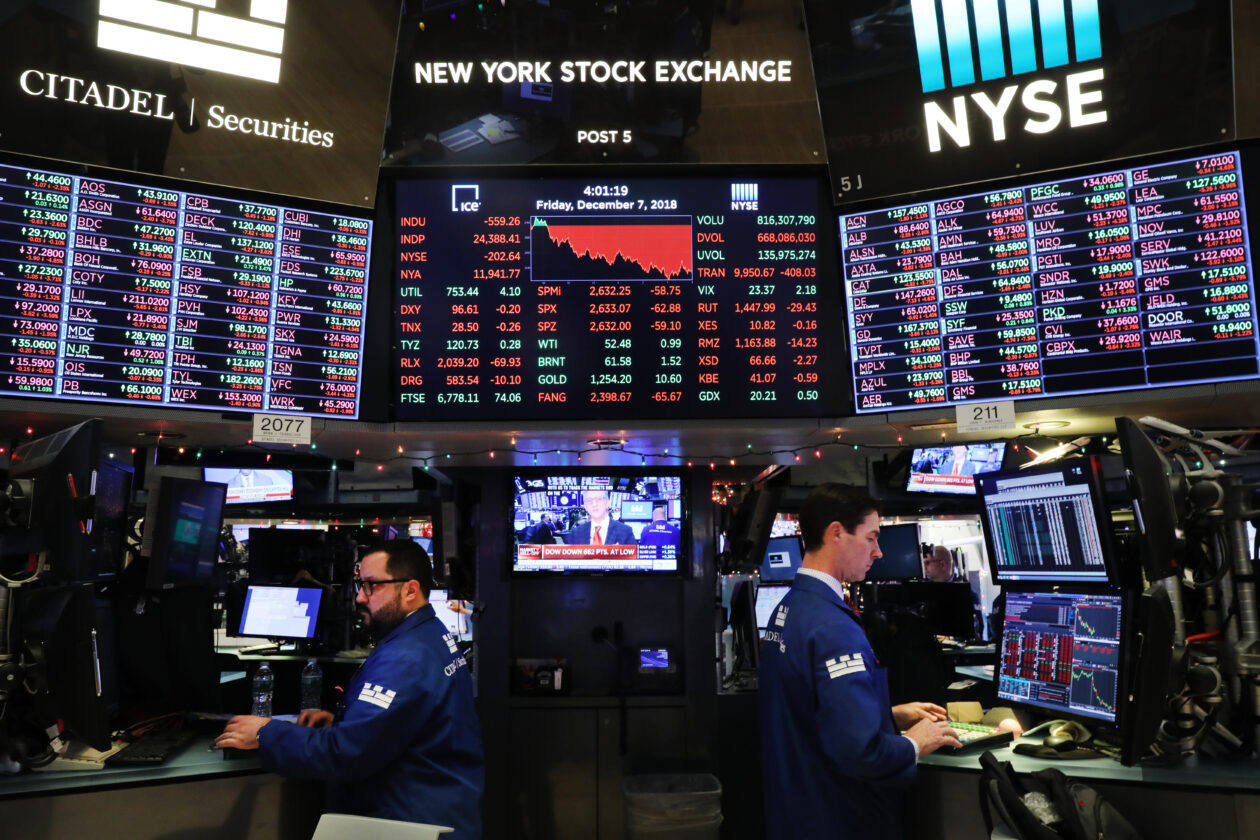Bitcoin and Ether prices were largely mixed but running into the red on Friday morning in Asia, with both looking to end the week in the losers column after a period of directionless trading. The interest rate hike by the Federal Reserve on Wednesday was followed by a bigger than expected GDP number in the U.S. overnight, raising concern about rates staying higher for longer. Japan tweaked its ultra-loose interest rate policy on Friday, adding to the risk-averse mood. Most other top 10 non-stablecoin cryptocurrencies traded mixed. Binance’s BNB led the winners after the world’s largest crypto exchange said it would fully restore operations in Japan in August. The Forkast 500 NFT index dipped and U.S. equity futures moved higher after a down day on Wall Street on Thursday.
Losing steam
Bitcoin dipped 0.41% in the last 24 hours to US$29,211 as of 07:45 a.m. in Hong Kong, bringing its loss for the past seven days to 1.97%, according to data from CoinMarketCap. The world’s largest cryptocurrency skidded lower on Thursday evening, managing to stay above support at US$29,000, but only just.
Concern about higher interest rates compounded on Friday for risk assets like cryptocurrencies when the Bank of Japan – one of the last major central banks to maintain a loose monetary policy – adjusted its yield curve control policy, potentially creaking open the door to higher rates and raising the cost of money.
The Bank of Japan changing its ultra-loose monetary policies could be an issue to the crypto market, which is running out of price catalysts, Markus Thielen, head of crypto research & strategy at digital asset service platform Matrixport, said in an emailed comment.
The recent Bitcoin exchange-traded fund (ETF) filings in the U.S. could have boosted crypto higher but, “prices have instead been range-bound,” according to a Matrixport report on Thursday.
“The Grayscale Bitcoin Trust (GBTC) net asset value has lowered its discount from -45% to just -27% this year, but as the discount has started to widen again (from -25%), we see this as a sign that the Blackrock Bitcoin ETF news is losing momentum. The result could be a drop in Bitcoin prices,” said the report.
“Predictably, the crypto market has become very quiet during these summer weeks. This has caused trading volumes and volatility to fall markedly. Investors might be well advised to replace their Bitcoin spot with Bitcoin options, notably upside calls, as lower volatility has made option prices cheaper.”
Along with Bitcoin, Ether dipped 0.51% to US$1,860, down 1.68% for the seven-day period.
Other top 10 non-stablecoin cryptocurrencies traded mixed, with Polygon’s MATIC leading the losers, and Binance’s BNB the winners.
Binance’s BNB gained 0.75% to US$240.46, but was still trading 0.98% lower for the week.
Changpeng Zhao, chief executive officer of Binance, announced at the WebX conference in Tokyo on Wednesday that the crypto exchange will restore full operations in Japan in August.
“Japan is a flagship leader in this (Web3) area and I think is an example for the rest of the world to follow. And to that end, Binance is extremely happy to participate in the Japanese market again,” said Zhao in his address.
On the regulatory front in the U.S., the U.S. House Financial Services Committee passed a bill Wednesday aimed at defining whether cryptocurrencies are securities or commodities.
The bill, Financial Innovation and Technology for the 21st Century Act, seeks to increase the Commodity Futures Trading Commission’s oversight over the crypto industry and clarify the jurisdiction of the Securities and Exchange Commission (SEC).
The House of Representatives Agricultural Committee also voted on Thursday to approve the bill, which now moves to the House floor.
“The US regulatory permafrost is thawing. For the first time, Congress took critical steps to establish a comprehensive federal regulatory framework for digital assets in the US,” said Sheila Warren, CEO of the Crypto Council for Innovation – a global alliance of crypto industry leaders, in an emailed comment.
“Policymakers recognize that not only does legal uncertainty stifle responsible innovation, but it threatens to create an environment in which American investors must turn offshore,” Warren added.
The total crypto market capitalization dipped 0.47% in the past 24 hours to US$1.18 trillion, while trading volume dropped 16.53% to US$26.07 billion.
Forkast 500 dips (again), CyberKongz’s Genkai stumbles
The main Forkast 500 NFT index dipped 0.65% in the past 24 hours to 2,619.60 as of 10:00 a.m. in Hong Kong, down 2.95% for the week. Forkast’s Ethereum, Solana and Polygon NFT market indexes all logged losses, while Cardano’s index edged higher.
Total NFT trading volume fell 16.28% in the past 24 hours to US$16.84 million, according to data from CryptoSlam. Volumes on the Ethereum, BNB Chain, Bitcoin and Polygon networks fell. The Solana, Mythos Chain, Immutable X and Cardano networks logged increases.
By NFT collections, Ethereum-based Bored Ape Yacht Club (BAYC) saw the largest 24-hour trading volumes, which edged up 2.92% to US$931,750.
But over a longer time scale the trading picture for BAYC doesn’t look so pretty, with the collection’s 30-day volume slumping 82% and the floor price falling 15% in the same period, according to NFT data tracker WGMI.io.
An NFT highlight this week is the Genkai collection of 20,000 anime-themed NFTs based on the CyberKongz NFT series. It was launched on Thursday and available on Ethereum and the Ronin blockchain operated by Sky Mavis, the Vietnam-based developer behind breakout play-to-earn title Axie Infinity.
Still, the overall trading slump caused a bit of a stumble for Genkai.
“The market continued to be very slow and the CyberKongz failed to mint out their full (Genkai) collection. However, they did sell out their full supply of NFTs on Ronin within an hour and so have raised roughly US$2 million,” said Yehudah Petscher, NFT Strategist at Forkast Labs.
“Because of the slow sales in the Genkai collection, the team is giving free extra NFTs to those who mint, continuing a long tradition in NFTs of rewarding holders,” said Petscher.
Elsewhere, the U.S.-based online music store Beatport, which is known for selling music resources to DJs for remixes, launched its NFT marketplace Beatport.io on Thursday, where users can buy, sell and trade electronic music recordings as NFTs.
The Beatport NFT marketplace was developed in partnership with Germany-based Web3 startup Define Creative, and is built on Aventus, a parachain based on the Polkadot network.
U.S. equity futures shrug off rate concerns

U.S. stock futures traded higher as of 11:30 a.m. on Friday in Hong Kong. The three major U.S. stock indexes closed lower in regular trading the prior day, with the Dow Jones Industrial Average leading the losers with a 0.67% slide, ending its longest winning streak since 1987.
In Asia, the main stock indexes were mixed on Friday morning. China’s Shanghai Composite and Hong Kong’s Hang Seng rose, while South Korea’s Kospi and Japan’s Nikkei logged losses.
U.S. gross domestic product (GDP) accelerated to 2.4% in the second quarter of the year, the Commerce Department said on Thursday. The number beat analysts’ expectation of 1.8% growth, further easing fears about a recession this year, Reuters reported on Friday.
However, the bad news in that good news is faster GDP growth may suggest to the Federal Reserve it needs to do more policy tightening to curb inflation, according to a Bloomberg report on Thursday.
However, the GDP report did show signs of a slowdown in price gains. The index for gross domestic purchases, an inflation gauge, rose at an annual rate of 1.9% in the second quarter, the slowest in three years.
Elsewhere, the Bank of Japan (BOJ) announced on Friday it will maintain its ultra-low interest rates, keeping its short-term policy interest rate target at -0.1% and the 10-year government bond yield at around 0%.
But the BOJ also announced an adjustment to its so-called yield curve control policy, saying it will allow “greater flexibility” in use of the monetary tool, a move seen by some investors as the first baby steps to the BOJ trying to normalize policy after years of an ultra-loose monetary regime to combat deflation.
The tool, known as YCC, aims to control the shape of the bond yield curve to suppress short- to medium-term rates – which affect corporate borrowers – without depressing super-long yields too much and reducing returns for pension funds and life insurers, according to the explainer by Reuters.
(Adds equity section, updates introduction on BOJ, equity futures.)





